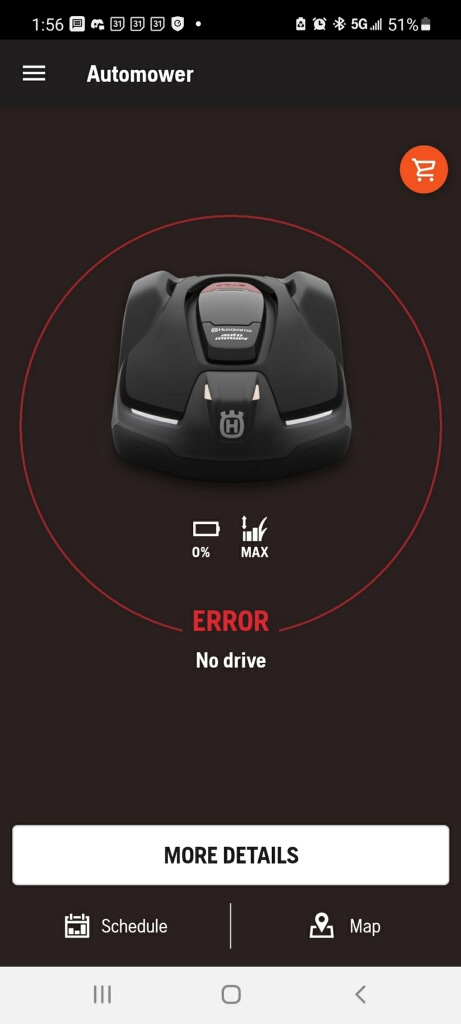If there’s a memory about my childhood that sticks out more than others, it has to be the summers filled with doing lawn work for my parents. Since I was a perfectionist, I made sure to do everything right — from using a weed wacker to get those perfect edges, to emptying the cut grass into bags for collection. Well, I haven’t needed to do any sort of lawn work in my adult life primarily because I’ve lived in apartments. But it hasn’t stopped me from wondering about how this chore could be automated.
Enter today’s lawn mowing robots, which to me seems like the kind of thing that could’ve been my savior growing up. Over the last couple of weeks, I’ve been able to check out a Husqvarna lawn mower robot in action. Just like its robot vacuum counterparts, these lawn mowing robots are here to save us from the heavy lifting of cutting the lawn — but at the same time, have the same challenges that robot vacuums have and continue to face. Sure, it’s swell that a robot is doing all of the dirty work, but it still needs a watchful eye.
Cutting grass for hours on end
What struck me first about the Husqvarna Automower 430XH is how ridiculously quiet it is with mowing. Since it’s battery powered, you don’t get the traditional roar of gas-powered mowers. Secondly, the robot can take hours upon hours to finish cutting the grass, which may seem obnoxious, but in reality, the pacing is intentional. That’s because the Husqvarna Automower 430XH is meant to do its job daily, rather than the typical once-a-week job I’m used to expecting.

This routine is beneficial in two ways: The grass never gets too tall and the clippings are entirely nonexistent. There’s no need for it to collect the clippings and discard it elsewhere, so the mulched clippings act as fertilizer. I’m all for minimal interactions, so for the Husqvarna Automower 430XH to do all the cutting means more free time for me to do something else. However, it’s really important to be around nearby while the robot is working — just in case something happens.
Hung up on obstacles
Unlike robot vacuums, today’s lawn mowing robots have the entire outside world to call its home. The last thing anyone wants to happen is for it to suddenly run away, off your property. Luckily there’s a safeguard in place that keeps the Husqvarna Automower 430XH from going rogue and slipping away. Through the use of boundary wires, which in this case have been installed below ground, it helps to establish the boundaries of the lawn. On top of that, the Husqvarna Automower 430XH leverages GPS to notify you through the app if it’s outside of its geofenced area.

While the boundary wires help to guide the robot lawn mower, there are still times when it can be hung up due to obstacles in the yard. Furthermore, there’s no way to properly designate specific zones in the lawn — so you could just send the robot to cut an exact area of the lawn. You can’t do this with the Husqvarna Automower, which goes on its merry way cutting grass.
Indoors, robot vacuums are able to distinguish boundaries because of the closed space and how lidar (light detection and ranging) technology has been perfected to enable them to map out rooms. At the moment, boundary wires are necessary to help lawn mowing robots establish where to cut. With various on board safety sensors, it’s supposed to do its best to avoid obstacles. In reality, however, it still proves challenging for the pricey lawn mowing bot. Watching it get stuck on small things is frustrating, especially when each occurrence requires human interaction to resolve.
The promise of getting better with time
There’s no denying that there are still growing pains to iron out with today’s lawn mowing robots. Don’t get me wrong, I’m ecstatic about the idea of yet another robot in my life that does a chore for me. But similar to robot vacuums, it’ll take time before these automatic mowers become self-sufficient and efficient with the job. We’re not there just yet, mostly because of the challenges of tackling navigation in open spaces.

There are plenty of useful features and technologies employed already with the Husqvarna Automower 430XH, like theft protection by alarm/PIN code, automatic charging, lift and tilt sensors that stops it entirely if the mower is lifted, and a weatherproof construction to protect it from rain. But at the end of the day, I crave convenience — something that just works and doesn’t require a lot of interaction. Similar to how robot vacuums became more efficient at vacuuming with the help of room mapping technologies, artificial intelligence, and cameras, the same can be said about the future of lawn mowing robots.
Considering that the Husqvarna Automower 430XH comes in at $2,500, you’ll need to have a lot of patience making sure it gets the job done. But at the very least, I’m not roped into doing all of the mowing — now that’s an appealing prospect for me.
Editors' Recommendations
- iRobot launches affordable robot vacuum and mop combo that costs just $275
- The SwitchBot Mini Robot Vacuum K10+ is designed for cramped rooms and tight spaces
- Here’s why you need a robot vacuum that empties itself
- The j7+ is iRobot’s first two-in-one vacuum and mop combo
- Is a robot vacuum that doesn’t auto-empty even worth it?






